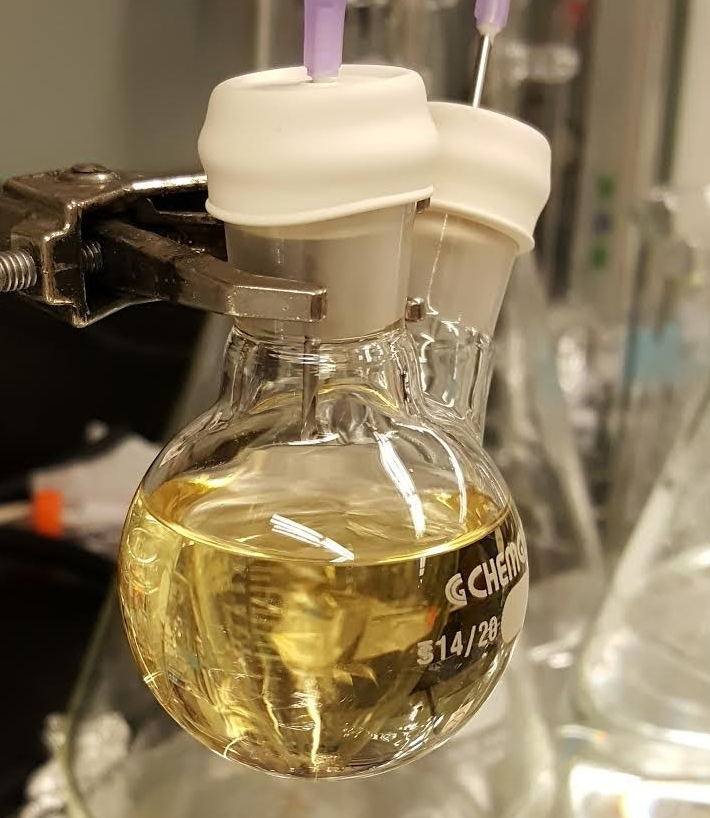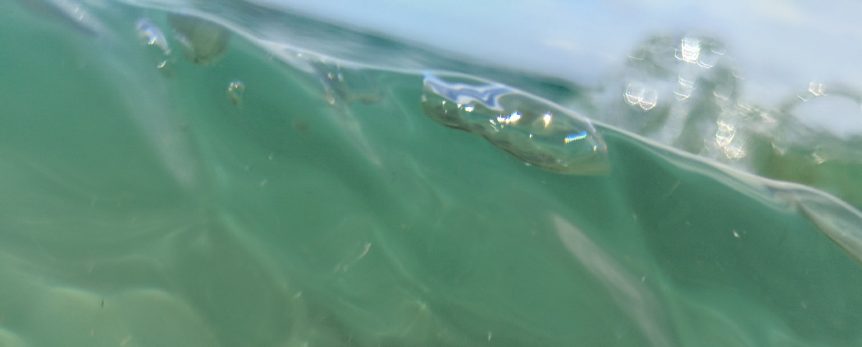Like many people, I grew up watching Disney animated movies. But now as a Ph.D. student who studies connections between ocean and atmospheric chemistry, these childhood ideas are much more real than I ever expected.
We’ve all heard the story: lions eat the antelope. And when they die, their bodies become the grass and the antelope eat the grass. What most people don’t realize is that this same process can be seen in the ocean with a microscope.

Concentrated colored (yellow) organic matter, including humic substances, extracted during a phytoplankton bloom
Tiny algae in the ocean grow in number, and when they die, their bodies are broken down by bacteria in the ocean to provide nutrients for other organisms. During this microscopic circle of life, a class of molecules is made called “humic substances”, and these are the molecules I study.
Humic substances are special because they are colored, in other words they can absorb light. They can be also launched from the ocean into the air via sea spray (what I call here the “colors of the wind”).
And when they absorb light in the air, they can start reactions that transform the chemistry of the atmosphere. This exchange from the ocean to the air doesn’t always happen, so my work tries to uncover when and how these molecules get into the air during these ocean life-and-death processes.
The part that I love the most about this research is that you quickly learn that everything is connected. Ocean chemistry is linked to atmospheric chemistry, what happens on the microscopic scale can affect the global scale, and the ocean’s circle of life can give rise to the colors of the wind.

Mitch Santander sitting next to a spectrofluorometer, a tool used to measure the relative abundance of humic substances.
— Mitch Santander, CAICE Graduate Student

